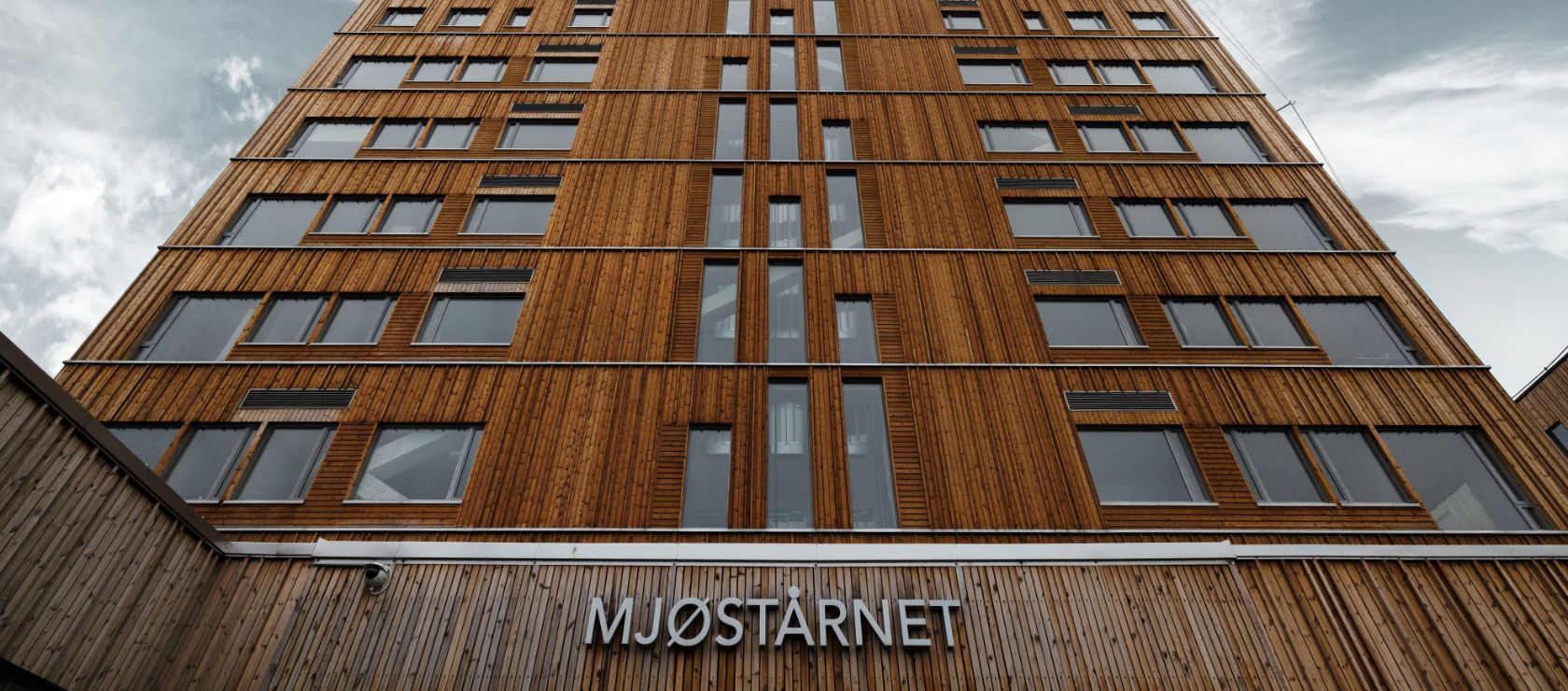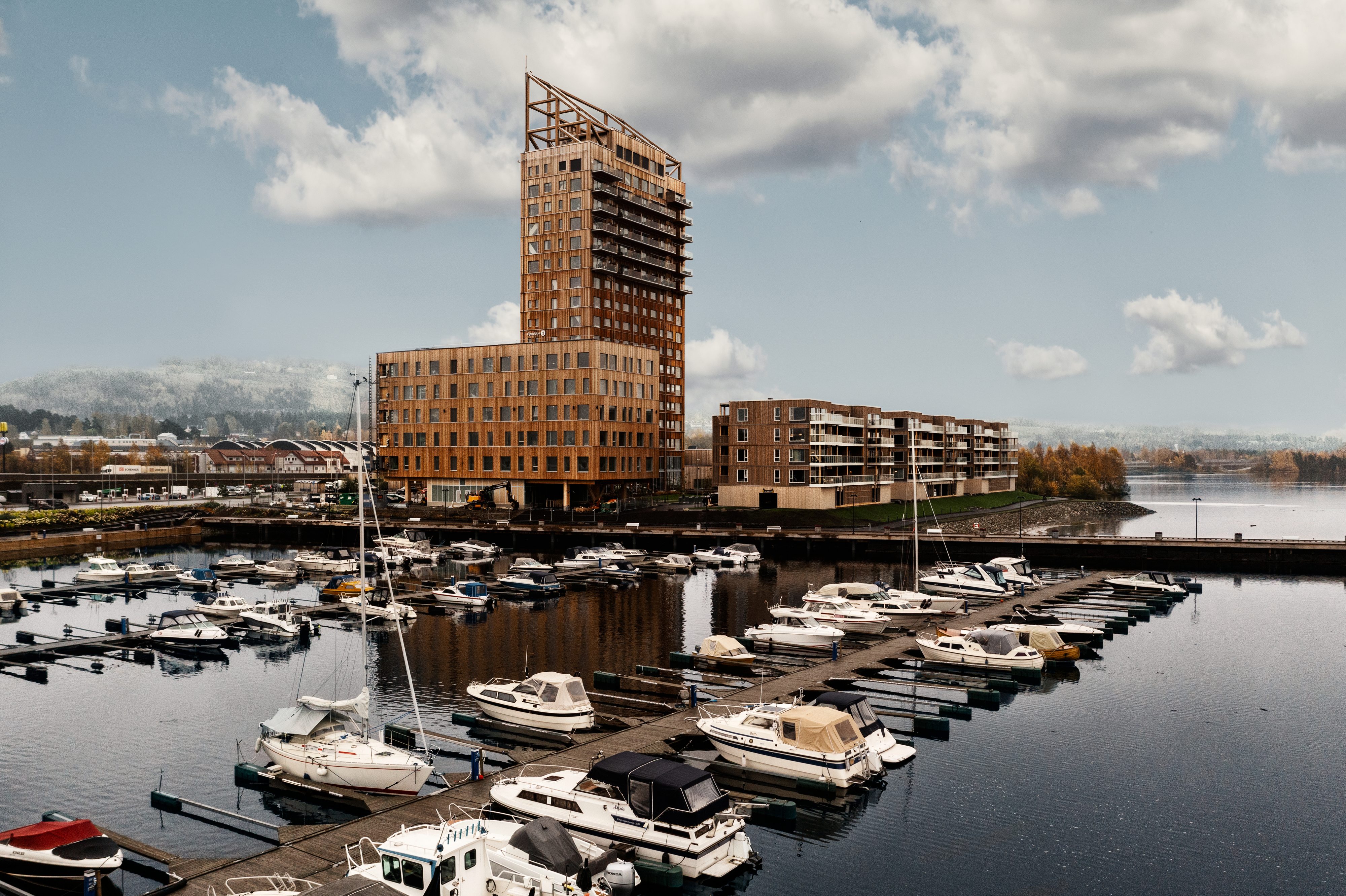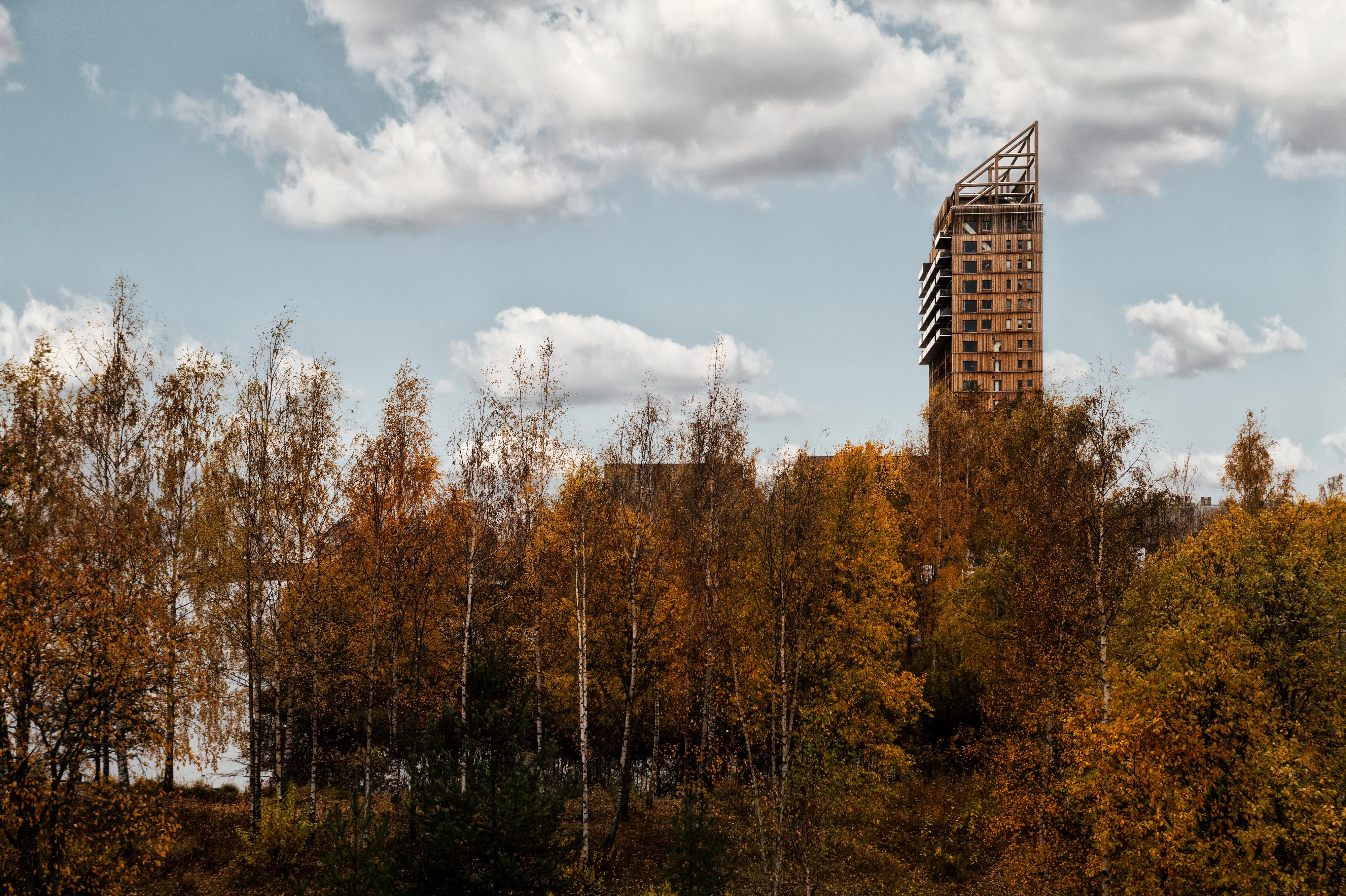The quiet waters of Lake Mjøsa are surrounded by green hills, in whose vegetation are camouflaged few and scanty houses. Among these, however, there is one that towers high in the sky, as if to make itself visible from every point of the valley. It is the Mjøstårnet, a skyscraper of 18 floors and 85.4 meters high that is attracting the attention of the world for one of its peculiarities: it is built entirely of wood.
The story of the fifth episode of "BG4SDGs - Time to Change", the project conceived by Stefano Guindani in collaboration with Banca Generali to narrate the state of the art of the UN 2030 Agenda, starts from here, a hundred kilometers away from the Norwegian capital of Oslo. The Norwegian skyscraper thus becomes the subject from which the photographer's lens takes its cue to investigate at what point is the path to achieve the Sustainable Development Goals (SDG) number 11 "Making cities and human settlements inclusive, safe, durable and sustainable".
Opened on March 15, 2019, the Mjøstårnet is currently the tallest wooden skyscraper in the world. And even if its primacy will soon be surpassed, its legacy is already carved in the history of world architecture. Its body is in fact composed of over 2,700 cubic meters of wood taken from the forests in the area where it stands and able to absorb up to 1,700 tons of CO2. The trees pruned to give life to the construction of the skyscraper have been replaced by two other trees: in practice, the Mjøstårnet can be considered as a forest within a forest.
 Stefano Guindani
Stefano Guindani





